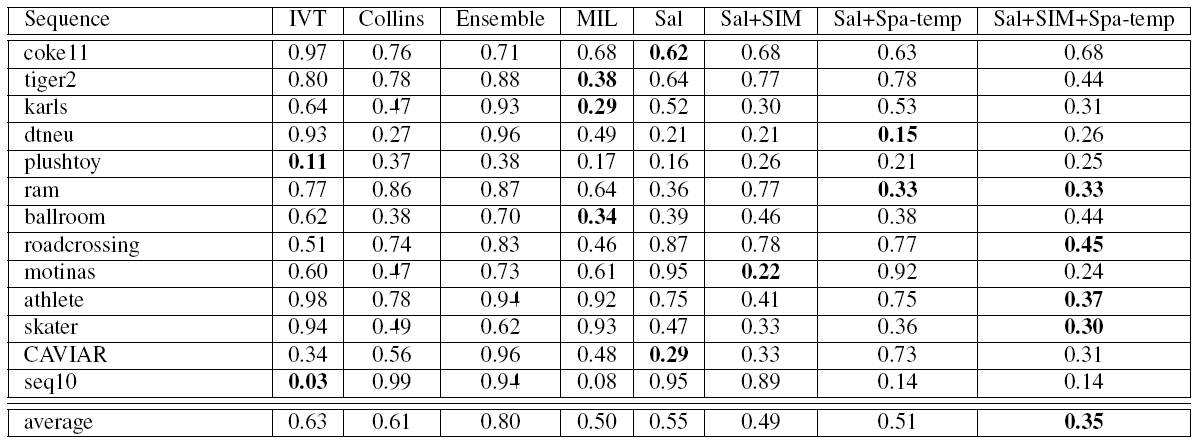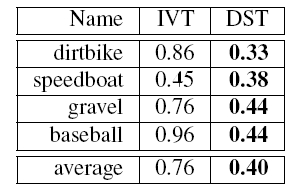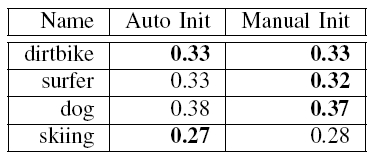
| Home | People | Research | Publications | Demos |
| News | Jobs |
Prospective
Students |
About | Internal |

| Saliency Based Discriminant Tracking | ||||||||||||||||||||||||

|
||||||||||||||||||||||||
|
We consider tracking in the context of center-surround saliency mechanisms that are prevalent in biological vision. Discriminant tracking can be posed as a particular instance of this discriminant saliency: it provides a unified and principled framework for classifier design, target detection, automatic tracker initialization, and scale adaptation.
The video clips are in Quicktime format (H.264), and a most recent version of Quicktime is required. Quicktime is a free software and can be downloaded from here.
Comparison When Initial Target Position is Known



|
||||||||||||||||||||||||